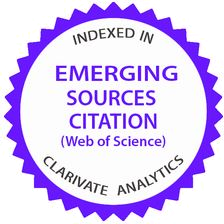Malaysian Journal of Mathematical Sciences, March 2016, Vol. 10(S)
Special Issue: The 10th IMT-GT International Conference on Mathematics, Statistics and its Applications 2014 (ICMSA 2014)
S-GSTAR-SUR Model for Seasonal Spatio Temporal Data Forecasting
Setiawan, Suhartono and Mike Prastuti
Corresponding Email: [email protected]
Received date: -
Accepted date: -
Abstract:
Generalized Space Time Autoregressive (GSTAR) is one of space-time models that frequently used for forecasting spatio-temporal data. Up to now, the researches about GSTAR only focused on stationary non-seasonal spatio-temporal data. Ordinary Least Squares (OLS) is a method that usually applied to estimate the parameters of GSTAR model. Parameter estimation by using OLS for GSTAR model with correlated residuals between equations will produce inefficient estimators. The method that appropriate to estimate the parameter model with correlated residuals between equations is Generalized Least Square (GLS), which is usually used in Seemingly Unrelated Regression (SUR) model. The purpose of this research is to propose GLS method for estimating parameters in seasonal GSTAR models, known as S-GSTAR-SUR. Moreover, this research also proposes a spatial weight based on the normalization of partial cross-correlation inference. Simulation study is done for evaluating the efficiency of GLS estimators. Then, the number of tourist arrivals at four tourism locations in Indonesia (i.e. Jakarta, Bali, Surabaya, and Surakarta) is used as a case study. The results of simulation study show that S-GSTAR-SUR yields more efficient estimators than S-GSTAR-OLS when the residuals between equations are correlated. It is showed by the smaller standard error of S-GSTAR-SUR estimators. Additionally, the comparison of forecast accuracy between Vector Autoregressive Integrated Moving Average (VARIMA), S-GSTAR-OLS and S-GSTAR-SUR shows that S-GSTAR-SUR model with spatial weight based on normalization of partial cross-correlation inference yields the smallest RMSE for forecasting the number of tourist arrivals at four tourism locations in Indonesia.
Keywords: GSTAR, GLS, SUR, Seasonal, Spatio-temporal, Tourist Arrivals









